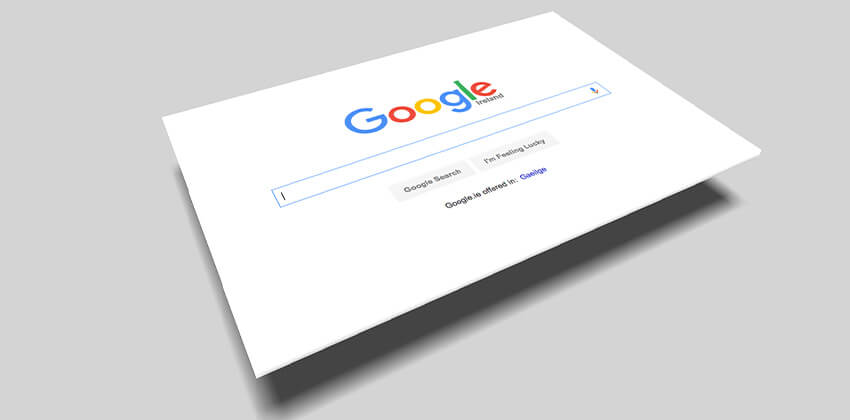
Understanding web addresses and domain names is important to your personal and financial safety.
Every web page has a URL (Universal Resource Locator) – the collection of letters and punctuation in the location bar at the top of your browser.
These are the letters you type into a browser’s location bar to tell it what web page you want to see.
Understand Domain Names
A “domain name” is the name of the location on the Internet of the website you are visiting. Each domain is owned by someone, somewhere.
The domain name of this website is Job-Hunt.org. Look at the location bar at the top of this page, and you will see it there along with more detail about this actual page’s location.
This is what you should see in your browser’s location bar, although you may need to click in the bar to make it completely readable.
In the image below, the Chrome browser has bolded the domain name and the letters “www.” Other browser may also bold the domain name to help you know the webpage you are viewing.
![]()
The letters following the domain name are the physical location on the computer publishing this page. The name of the file that creates this page is “article_about_domain_names.shtml” (far right end of the URL). And that page is located in a folder named “onlinejobsearchguide” (underlined in the image above).
Advertisement
Those sections of the URL are separated by forward slashes, circled above.
The person running the website can name those sections after the domain name with any words they choose to use.
If you check the location bar for the webpage you are visiting, most current web browsers and smart phones will show you the domain name of the website you are visiting.
Smart phones may only show you the domain name. It is VERY important to pay attention to the domain name to be sure that you are seeing the webpage you want to be seeing. If the webpage you see looks like a page from Google, but you don’t see Google.com to the left of that first forward slash, you are viewing a page that is pretending to be Google.
[Related: How Scam Proof Are you?]
It Is Easy to Register a Domain Name
Anyone, anywhere – with a credit card and an Internet connection – can register a domain name, typically for less than $10/year.
People who don’t have a Website often don’t have any experience with domain names and don’t understand how they work. Knowledge is power.
Domain names are one of the building blocks of the Internet, and they are a critical part of every Web address.
Domain names come in many flavors – Google.com, Verizon.net, Job-Hunt.org, Harvard.edu, Canada.ca, Whitehouse.gov, Navy.mil, etc.
Since domains are so inexpensive, there are many bogus domain registrations and, consequently, bogus Websites. So, understanding domain names helps you be smarter and safer on the Internet.
Why Is a “Top Level” Domain Important?
The letters after the “dot” – as in “dot com” – represent the Top Level Domain (TLD). And .com is the most common commercial TLD.
The TLD is important because it may give you a good hint about the credibility of the Website, and, sometimes, where it may be located. Many different TLD’s exist, including those for countries, but these are the Top Level Domains most frequently used:
*.com
Most common commercial domain in the U.S. (but do NOT assume that all .com’s are U.S. based). Open to purchase by anyone, anywhere.
*.net
Another very common commercial domain, not unique to the U.S. Open to purchase by anyone, anywhere
*.org
Another very common commercial domain, not necessarily associated with non-profit status. Open to purchase by anyone, anywhere.
*.us
The Country Code for the United States. Open to purchase by anyone who certifies that they are in the U.S.
*.ca
The Country Code for Canada – there are over 100 other Country Codes for most of the countries in the world, e.g. .uk for the United Kingdom, .ie for Ireland, etc. Requirements for purchase depend on what the country has chosen to do.
*.edu
Used by educational organizations, mostly colleges and universities, and is pretty reliably used only by education in the U.S. Difficult to acquire; fairly closely controlled.
*.gov
Used by the U.S. government. Closely controlled.
*.mil
Used by the U.S. Department of Defense. Closely controlled.
*.info
Used by anyone. Open to purchase by anyone.
Many other top TLD’s have been introduced since 2010.
What Is a “URL”?
The “URL” is the complete Internet/web address for a web page. If you look at the location bar in your browser right now, you will see this URL –
http://www.job-hunt.org/onlinejobsearchguide/article_about_domain_names.shtml
This URL tells you that you are looking at a page named “article_about_domain_names.shtml” on a website with the domain named “job-hunt.org.” And “onlinejobsearchguide” is the name of the folder on the web server computer for Job-Hunt.org where the article is stored.
A URL can have many slash marks and other punctuation in it, but the second and third slash marks go around the domain name and the domain name is at the right end of that section, just before the 3rd slash mark – http: / / www.job-hunt.org /
This URL tells you that you are looking at a page named “posts” on the website of “Google.com.” And, in this case, “+SusanPJoyce” is the folder on the web server for Google.com where the article is stored.
Notice that the letters in front of “google.com” in that URL are not “www.” Using the “www” is a convention from when the “World Wide Web” was new (circa 1995). The letters “www” are not required in a URL!
In this case, the “plus” in “plus.google.com” tells you that this is a part of the Google.com website which has been named “plus.” Someone running a website can name that part of the website anything they want.
Deciphering Three Examples of Confusing URL’s
Fortunately, today most browsers highlight the domain name of the site you are visiting, so you know the website you are actually visiting. In fact, if you look at the url right now, you can probably see that you are visiting a page of job-hunt.org because “job-hunt.org” is emphasized in the location bar.
1. We could name part of the Job-Hunt.org website “google.com,” and then the URL might look like this –
http://google.com.job-hunt.org/whatever/something-else/article-name.
The website visited would still be “job-hunt.org” but some people might be fooled into thinking they were at Google.com because they see google.com in the URL. You can figure this out if you remember that the true domain name is at the right end of part of the URL just before the third slash mark in the URL.
2. Google could return the favor (?) by creating a web page that looks like this –
http://job-hunt.org.google.com/whatever/something-else/article-name.
That would be a section on the Google.com website that might fool people into thinking they were at Job-Hunt.org – remember that the domain name is at the right end of the part of the URL between the second and third slash marks at the beginning of the URL.
3. Another example I have seen looks something like this –
http://job-hunt.org/whatever/something-else/Google.com/
Again, the web site you would be seeing (if this example was real) is Job-Hunt.org, but you would be on a page of the Job-Hunt.org website that happened to be named Google.com. It’s not Google.com – it’s really Job-Hunt.org, but it could be confusing if you didn’t remember that the domain name is between the second and third slashes in the URL.
Neither Job-Hunt nor Google will do this kind of URL, but someone trying to make you think you were at Google.com (or at Job-Hunt.org) when you were at a completely different site, might create this kind of URL.
So, it is very useful to pay attention to what is in the location bar, and, in particular, what the real domain name of the web page is. If it says that it’s a page on Google.com (or any other website), Google.com should be in the correct part of the URL.
What Is “Whois”?
Whenever you have a question about who owns a domain name, check one of the domain “whois” (literally, “who is?”) sites, like DomainTools.com. Every domain name has a “registrant” which is the owner of the domain name.
When in doubt, contact the domain registrant to verify who they are. The domain registration information should include the details about who owns the domain name, where they are located, and an email address.
Some domains are “private” which means the owner pays an extra fee to keep their name and contact information unavailable. This is a popular option used by scammers, so be wary of private domain names.
Use of Domain Names
- All domains are unique.
No two organizations use the same domain name, although the only difference may be the TLD (e.g. jobsearch.org vs. jobsearch.com), very close spelling (e.g. USAJOBS vs. USSAJOBSS) or hyphens (e.g. job – hunt.org vs. jobhunt.org) in the middle. - Small changes in a domain name can make a big difference.
What may look like a little tiny change to a domain name (like adding or removing a hyphen or changing the spelling or the country code) can mean a very big difference in which website you are actually visiting. One may be safe, and one may not be. - The same Web site may have multiple domain names.
Type job-hunt.com into your browser’s Address bar, and you end up at job-hunt.org. - Everything connected to the Internet is associated – somehow and somewhere – with a domain name, whether it’s an e-mail address or a Web page.
- A domain name must be associated with an IP (Internet Protocol) address to be visible or receive email.
Be Wary of Internet Protocol (IP) Addresses
An IP address is the number assigned by the Internet network infrastructure enabling the network to connect with different components of the Internet. I think of it as the “machine-language” address that corresponds to the “human-language” addresses we call domain names. Many IP addresses are comprised of a series of numbers in 4 sets of 1 to 3 numbers, ranging from 0 to 255. For example, 1.1.1.1 is an IP address, and so is 255.255.255.255, and everything in between.
The new IPV6 addresses are series of numbers and letters separated by colons, like this: 2001:0db8:85a3:0042:1000:8a2e:0370:7334.
When you see an IP address in your browser’s location bar, you have no idea what the domain name is. Sometimes that’s accidental. More often, the IP address is used to disguise the domain name. So when you see an IP address in the location bar, be very careful!
Bottom Line
Knowledge is power, and the scammers and schemers of the world are endlessly creative. So, paying attention to what is in the URL is often very important. As the old sergeant on the Hill Street Blues TV show used to say, “Be careful out there!”
 About the author…
About the author…
Online job search expert Susan P. Joyce has been observing the online job search world and teaching online job search skills since 1995. A veteran of the United States Marine Corps and a recent Visiting Scholar at the MIT Sloan School of Management, Susan is a two-time layoff “graduate” who has worked in human resources at Harvard University and in a compensation consulting firm. Since 1998, Susan has been editor and publisher of Job-Hunt.org. Follow Susan on Twitter at @jobhuntorg and on Facebook, LinkedIn.
More about this author…
Don't forget to share this article with friends!




